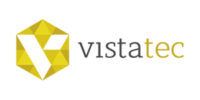This guest post was written by Elizabeth Riley, Director of Solutions Architecture at Vistatec and localization veteran, with a wide range of experience helping craft enterprise localization programs for global customers.
Every day, companies around the world create content, seeking to engage their customers and deliver captivating experiences to their users. As an expert leader in global content solutions, Vistatec works with some of the world’s most iconic brands to help them achieve those goals on an international scale by delivering multilingual content and solutions.
From translation of documentation to localization of apps and everything in between, Vistatec provides an array of services to ensure the end user experience is consistent, predictable, and culturally appropriate, regardless of locale. While Vistatec uses a number of software solutions to support their clients, a favorite solution that dominates the technical documentation space is MadCap Flare, which we will get too shortly.
How Vistatec Supports Global Organizations
Vistatec partners with established global companies on their international content and localization. We also count among our customers a growing number of newcomers to the globalization space: unicorn startups, tech companies, rising stars. In other words, organizations whose vision and enthusiasm for disrupting their market is matched only by their need to scale up their localization efforts as quickly as possible. For these customers, Vistatec often assists not only with localizing their content, but also with strategic advice on how to build their localization tech stack:
- What’s the best translation management system?
- Which content management system would work well with the rest of my localization technology stack?
- What program do you recommend for creating technical publications?
- We’re using Microsoft Word to write our documentation, what do your other customers use that’s more suitable for advanced authoring?
It’s easy for Vistatec to give advice, not only because of our years of experience handling all types of content in all types of systems, but also because of our technology philosophy. Vistatec is technology agnostic. We don’t develop our own translation tools, nor do we require our customers to use the ones we like. This means that our expertise using a variety of different applications, systems, and programs allows us to make recommendations based on our experience of how well those tools work for localization, instead of promoting proprietary programs we own or develop.
When it comes to those who are newer to localization but need solid advice to quickly build their globalization program using the best tools of the trade, Vistatec can help. In this post, we’ll discuss a common question from our customers: how to create multilingual technical documents and publications.
“Where Do I Start?” Creating Localizable Documentation
Just because an organization is new to localization doesn’t mean their needs are simple. Start-ups, tech companies, and other fast movers often have an array of content already: user assistance/Help, product documentation, instructions for use, or other technical publications, all just waiting to be to localized.
Frequently, these organizations may use more familiar tools to create documentation (think Microsoft Word) or an array of applications, some home-grown, to meet their needs. But this can be inefficient; word processing apps like Word may be comfortably familiar and adequate for simple or short documents. They usually aren’t suitable for proper content reuse and publishing in different output formats. Plus, updating individual Word documents and updating them later is tedious, inefficient, and highly likely to introduce errors.
Similarly, using different platforms to create different types of content (but which ultimately fits into a larger ecosystem, also destined for translation) may solve certain problems, but create others: again, missing out on content reuse, increasing the complexity of parsing the content for translation owing to different or less-common file types, and also more time for system upkeep in multiple platforms, to name but a few drawbacks.
The upshot? Familiarity is nice, custom-built apps are slick, but when it comes to quickly building out a mature and scalable localization program, stick with a tool proven to offer a single platform that allows you to create a variety of localizable technical documentation for a range of outputs you’ll need. Here, we’ll describe one program that does the job, and is also a solution Vistatec customers really like: MadCap Flare.
MadCap Flare for Single Source, Multi-Channel Output
MadCap Flare is a cutting-edge content authoring tool that allows output to be published in a variety of formats, including html and PDF, among others. Flare, as it is commonly called, is a popular tool for technical writers who may also use other programs such as those offered by Adobe like InDesign or Experience Manager, or older programs like FrameMaker to author technical content. While there is overlap in the features those other apps offer, Flare offers some unique features that make it an excellent choice for technical communicators who create content destined for translation.
What makes MadCap Flare an excellent application for content creation is that it is a truly single-source publishing application. (“Single-sourcing” refers to producing multiple output types from a single source file or project.) Flare allows you to create content in a single application and publish it in a range of types for print, online, desktop and mobile. Want more detail about single sourcing? Check out this post from MadCap Software.
Using MadCap Flare to create content confers one immediate and major advantage: you’re not required to purchase a suite of additional tools to ensure the content can be published in several different channels. Need Instructions for Use in PDF format? Create it in Flare and publish to PDF. Want it in html5? Same option and just as easily done. Got a bunch of docs authored in Word you want to leverage into new content that will be published in a variety of channels? Import those Word files into Flare, break up the content into smaller, relevant topics, create a Flare project and publish out into the formats you need. Importing Word files has been made even easier in the latest Flare release with a drag-and-drop wizard!) Flare also allows you to import other legacy file types that are common in localization: FrameMaker, DITA, etc.)
Considering that in most modern enterprise localization programs, content is created and shared across the organization in a variety of ways, having a single tool that allows that content to be published in many different channels of distribution is a huge advantage. Not only does it enforce consistency and reuse, which cuts down later on translation costs, but different teams working on disparate parts of something that ultimately overlaps from a content perspective can work collaboratively but still separately, publishing their documentation from a single source into the format required for their work, say publishing online help, or creating a user manual. It’s much more efficient and results in greater quality through reuse and consistency (important in localization, too!)
XML Architecture: Easy Localization Integration
Another important advantage Flare presents which is particularly relevant to localizable content is Flare’s completely open architecture. Content created in MadCap Flare is stored as XML, the emerging standard for content (and which also provides full Unicode for translation into both single- and double-byte languages.) The XML basis also makes projects and files easily accessible and shared and eliminates the need to create cumbersome and costly localization workarounds for double-byte character sets if the authoring tool doesn’t already support it. Additionally, with Flare projects comprised of XML files, it makes for easy integration with common translation and localization tools which consume XML files, such as translation memory systems (TMS), content management systems (CMS), and computer-aided translation (CAT) tools, which comprise the backbone of modern enterprise localization programs. Certain TMS applications also handle Flare project packages with greater technical efficacy, ensuring that the properties of the Flare project carry over into localization, which makes for fewer QA checks in the target languages (more on this in a later post!)
Topic-Based Authoring: Recycle, Reuse, Reduce
Flare also supports topic-based authoring, which is critical to ensuring optimal content reuse. Topic-based authoring (more about it here) allows content to be created divided up into “topics”, which are chunks of text that can be mixed and matched as desired to create a final document or publication. In Flare, you can also create “snippets”, which are chunks of content that you can reuse over and over in a project (think: warning label text that is included by default in Instructions for Use, but which you’d prefer not to retype or manually insert into your content each time it’s needed.) Creating snippets, you need only to create it once, and then insert it into as many topics as you’d like. Updating is also simplified, as once you create a snippet in Flare, any change you make to that snippet is automatic, applied everywhere that snippet is present in the project. This maintains consistency of your source file and improves later quality in translation.
Topic-based authoring and reuse are also both integral to later translation and translation memory reuse. Most enterprise translation programs operate on a principle of shared content across the organization, permitting consistency but also cost (and time) savings. Translations are created on the basis of (usually English) source content, which is then rendered into a variety of foreign languages. But in the enterprise translation program landscape, content is often updated and reused. Translation costs are therefore lower when there are fewer changes to make. Ensuring source content is internally consistent before it is sent out for translation ensures that only content that has changed gets translated, which saves money (less is translated) and also ensures that translations are of higher quality (unnecessary changes are not made to translations on the basis of an insignificant inconsistency in the source content.)
In short: using Flare and its topic-based authoring approach to source content development allows several key advantages in later localization:
- Splitting your source documents into smaller chunks by creating “topics” and “snippets”, which means you can generate different documents from the same content with less work and more consistency
- Reusing content to create new documentation and reusing common content across the organization means your overall content is consistent regardless of how it is published or where it is used (instructions, help, product literature…)
- More consistent source content ensures fewer changes in localization and less translation cost
- More consistency and accuracy in the source content makes updating easier and faster, which also reduces time and cost of localization
- More consistent content in both native and localized versions makes your documentation an extension of your brand while also improving overall user experience, regardless of locale
For companies with a proactive global mindset and a need to localize content rapidly, moving from a traditional publishing workflow to topic-based authoring in Flare is a sea change that yields faster and more consistent source content creation, but also exponential rewards in localization by reducing cost, improving quality, and slashing translation project turnaround times. Vistatec clients love gaining these advantages, and we at Vistatec agree that the simplicity of use and flexibility Flare offers make it a top choice for technical authoring and localization. Next up: We’ll cover technical tips and tricks for localization with MadCap Flare in a subsequent post – stay tuned!
About Vistatec
We have been helping some of the world’s most iconic brands to optimize their global commercial potential since 1997. Vistatec is one of the world’s leading global content solutions providers. HQ in Dublin, Ireland, with offices in Mountain View, California, USA. To learn more about Vistatec, please visit: https://www.vistatec.com

